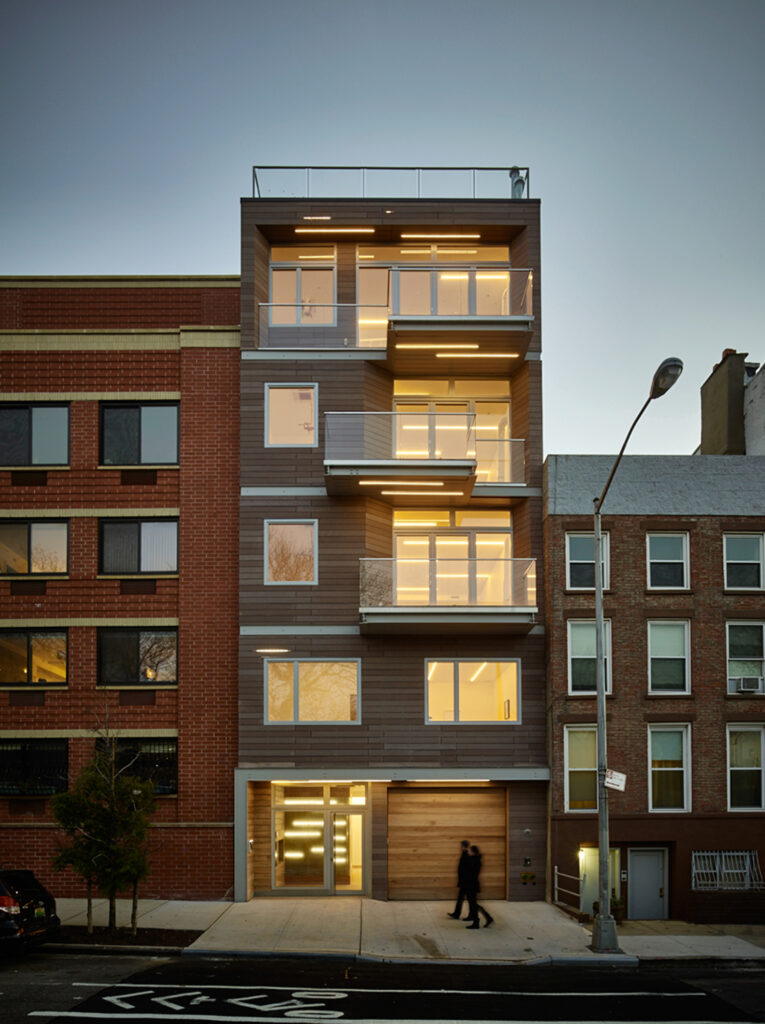
Eric Liftin joins Green Media News to share his passion for designing architecture for sustainability and efficiency.
Who is Eric Liftin?
Eric Liftin, AIA, founded MESH Architectures in 1997 as a hybrid architectural practice spanning the physical and virtual. MESH has designed a wide range of projects, large and small, residential and commercial. Always mindful of environmental sustainability, the firm integrates new materials and technologies, such as mass timber, LED lighting, and digital interfaces. MESH has a reputation for luminous spaces with new translucent materials. The firm has developed residential real estate with the goal of creating beautiful, high-performance buildings tailored to contemporary urban family life. Liftin holds an M.Arch from Columbia and a BA in Literature from Yale and is Passive House-certified.
Eric – let’s start with something fun What would you do with $1 Billion dollars?
We must work to restore balance in Earth’s ecosystems and preserve non-human life. This is important everywhere but particularly in central tropical zones in Central/South America, central Africa, and tropical Asia (Indonesia and vicinity) as well as Africa’s temperate zones. Half of the billion goes to organizations doing good work in these areas. The other half goes toward transforming the way we build: researching, inventing, and creating a development fund to build human habitation, buildings that are efficient, sustainable, beautiful, affordable, and a joy to inhabit. This work involves new materials, new building systems, new methods of prefabrication, and even AI to design new cities that feel dynamic and alive for people walking through them. This is an easier goal than the non-human one, but both are urgent to address.
Why do you think sustainability is such an important topic today?
Every rational, informed person at this point understands that we must act now, for two equally important reasons: to prevent runaway climate change by reducing atmospheric carbon and to preserve biodiversity and habitats for non-human life. The concept of sustainability encompasses using way fewer virgin resources in our goods and buildings, expending renewable energy instead of fossil fuel energy, drastically reducing pollution and habitat destruction, and generally reducing the human impact on Earth while allowing human civilization to thrive and grow. We have seen enough data: species are going extinct at unprecedented rates, animal and plant populations are threatened everywhere, and Earth’s warming is causing observable damage.
What do you envision your industry looking like 10 years from now?
I would like to think that in 10 years “sustainable architecture” will be a redundant phrase. It will be unimaginable to build irresponsibly. That means we are increasing density in cities while improving quality of life. We are routinely recycling building materials. We are not shipping tropical hardwoods around the world. We are not installing machines that burn fossil fuels. These goals are not so hard to achieve, but they will require new businesses that work collaboratively with existing design and construction businesses to solve the problems that design and construction entities cannot solve on their own.
What can the average person do to make a difference?
1. Indicate to elected and appointed officials that sustainable policies are important to you, as a voter.
2. Be an example: exercise reasonable restraint regarding resources and show respect for nonhuman habitats. In the USA it will be a combination of government and markets. Voting affects the government; behavior affects the markets.
Dylan Welch is the CEO and Host of Going Green, a podcast, website, and social media brand that highlights renewable energy, cleantech, and sustainable news.